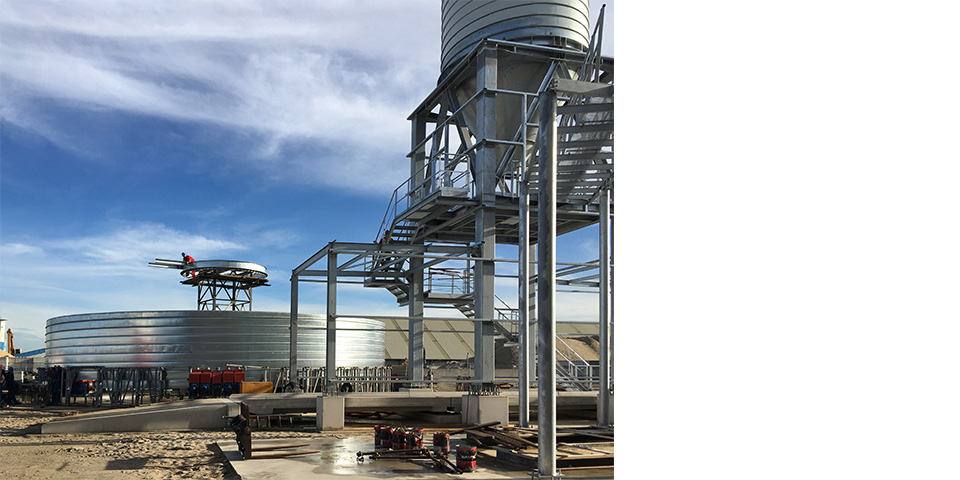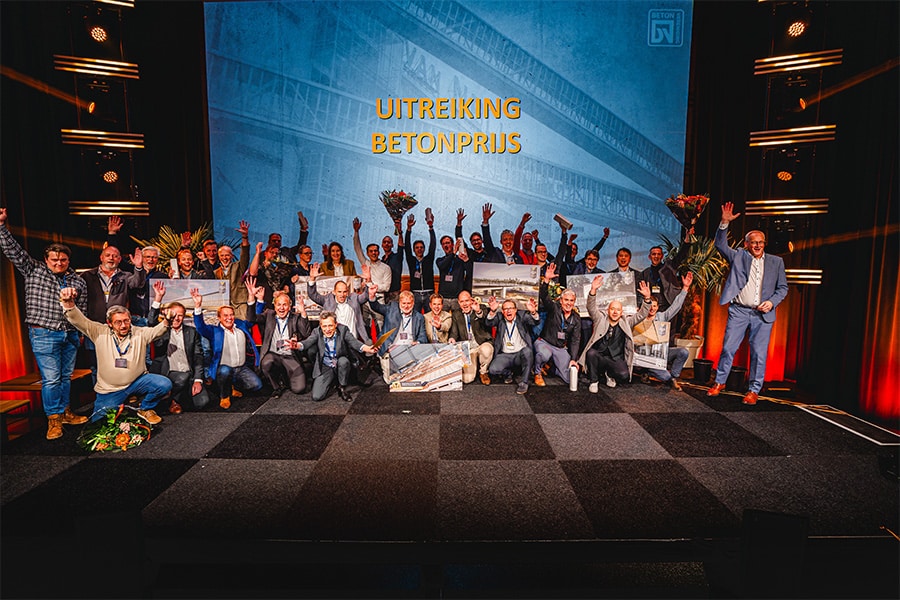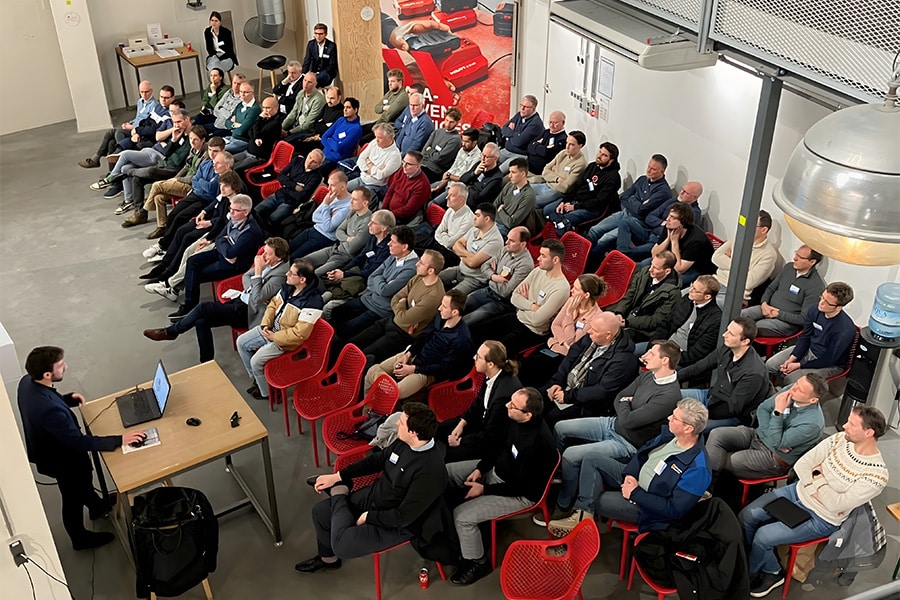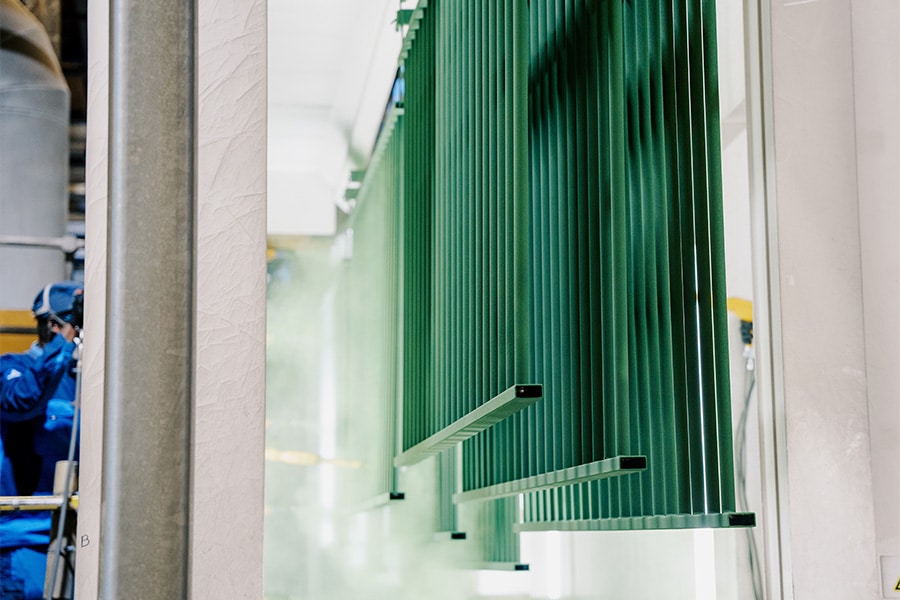
Moerdijk, New Silo Ecocem | High quality concrete thanks to sustainable binder
The large-scale task of sustainability is the challenge of the future, including the built environment. Since 2002, Ecocem has been engaged in the production of ground granulated blast furnace slag to reduce CO2-footprint of concrete structures significantly. It is proving to be a success. In fact, the manufacturing company has recently invested in new silos so that the sustainable binder eco2cem can also be transported and exported by ship.
"In 2002 we started processing blast furnace slag, a byproduct of the blast furnaces," says Erik Langelaan of Ecocem. "With our ball mill, we were able to grind about 200,000 tons of blast furnace slag into the binder eco2cem on an annual basis. Over the years, the production facility has expanded quite a bit and the capacity has more than doubled to about 500,000 tons per year, anno 2019. We supply the ground blast furnace slag in bulk to concrete mortar and concrete products producers who use the binder as a substitute (up to 80%) for cement, thereby saving a considerable amount of CO2-reduction in building in concrete."

Ecocem has recently invested in new silos so that the sustainable binder eco₂cem can also be transported and exported by ship.
Flat silo
Until recently, Ecocem transported the binder in bulk trucks by road, but recently transport by ship has also become a possibility. "We had a new silo built on the waterfront with a storage capacity of 4,000 m³," Langelaan clarifies. "The silo has a relatively flat shape (diameter of 17 meters and 20 meters high) instead of a narrow and high construction. This is due to the poor soil in Moerdijk. Nevermind that this silo rests on no less than 65 piles installed to a depth of 45 meters. Because the silo does not have a cone, a so-called screw reclaimer brings the blast furnace slag to the center of the silo and from there the binder - via a "tunnel" at ground level - is transported to a new day silo of 150 m³. A tunnel in the ground was not preferred because of the high groundwater level in the area."
Made on location
The large silo was fabricated on site in Moerdijk. Langelaan: "A large steel coil was placed in a holder and unwound after which the edges were flanged together. The double-walled silo was then fitted with reinforcing profiles and the gap filled with reinforcement mats and self-compacting concrete. The day silo, on the other hand, is a more straightforward silo and stands on a steel frame with weighing equipment. Both trucks and ships can be loaded from the day silo. Trucks on the weighbridge under the day silo and ships via a pneumatic conveyor with a maximum capacity of 250 tons per hour. By ship, the binder is mainly transported to our terminals in Gävle (Sweden), Sheerness (Ireland) and Runcorn (UK). Together with our other three production sites in Dublin, Dunkirk and Fos-sur-Mer, we cover Ireland, England, Benelux, France and part of Sweden as our main sales areas." The Ecocem Group produces 2.5 million tons annually at the three production plants: Ecocem France, Ecocem Ireland and Ecocem Benelux.

"We had a new silo built on the waterfront with a storage capacity of 4,000 m³."
In addition to being environmentally friendly, blast furnace slag (eco2cem) also improves the properties of concrete. Concrete becomes stronger and more durable. The concrete is more resistant to sulfate attack; its denser structure makes it almost impossible for chlorides and alkalis to penetrate. Eco2cem also makes concrete lighter, more even in color and less susceptible to lime scale. In short, the ideal binder for preserving concrete structures for now and the future: at Ecocem, 10% of its staff is working on innovations and the introduction of new applications.



